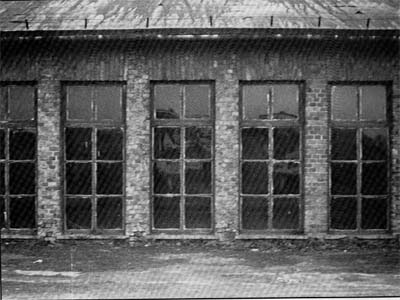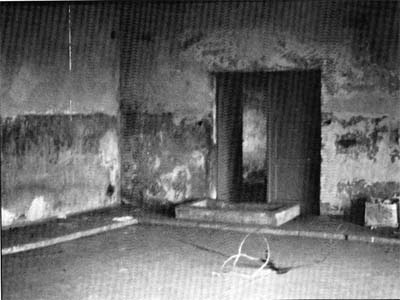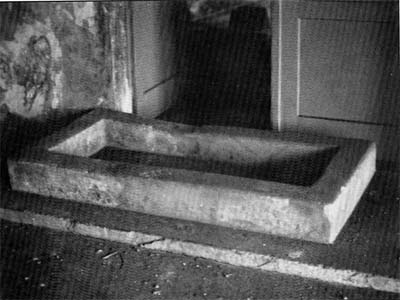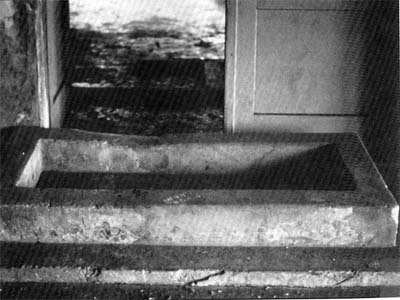| THE FIFTY SHOWERS OF THE ZENTRAL SAUNA |
|
 |
Photo 21:
Present state of the five big windows of the shower room. Above, the roofing felt is still visible. |
|
Photos 22, 23 and 24:
Three views of the shallow bath situated at the entrance to the showers, filled with water and hydrocyanic acid in which the prisoners' body hair was disinfested just before the shower. |
| Photo 22 |
 |
|
 |
Photo 23 |
|
| Photo 24 |
 |
|
| The following testimony is an adaptation of a letter from a former Czech prisoner to the head of the PMO archives, not yet classified: |
“Before the shower and during the disinfestation of their effects, the prisoners underwent a disinfesting treatment. Just inside the entrance door to the showers there was a small concrete bath full of a mixture of water and hydrocyanic acid, obtained by pouring Zyklon B crystals in the water The prisoner arriving for his shower, naked and with his head shaved, stepped into this basin and another stationed alongside the basin, his hand protected by a glove, passed the mixture over his head, under the arms and over the pubic hair.”
|
| It is interesting to consider this account in connection with an episode in Dr. Miklos Nyiszli’s book “Auschwitz: A doctor’s eyewitness account” (London. Granada Books 1949). In chapter 19, he cites the case of an adolescent Jewish girl who survived the action of Zyklon B in the gas chamber of Krematorium II, and explains it as follows (page 92): |
“By chance she had fallen with her face against the wet concrete floor. That bit of humidity had kept her from being asphyxiated, for Zyklon gas does not react under humid conditions.”
|
In other words, Dr. Nyiszli considered that there must have been a little pocket of very moist air around the girl’s face, and as hydrocyanic acid easily dissolves in water the gas was absorbed by the water vapour and she breathed a much less toxic atmosphere than the other victims. Of course, HCN dissolved in water remains its highly poisonous properties as shown by the fact that it was used for delousing the prisoners and by the fact that in the preparation of Laurier Cerise water that used to be used in pharmacy in the fairly recent past, the HCN content had to be carefully measured for fear of poisoning the patient.
In the author’s opinion, however, the survival of this girl (who was nevertheless killed by an SS man shortly afterwards by a bullet in the back of the neck) can be explained otherwise. Dr. Nyiszli states at the beginning of his account that she was found “Against the wall, near the entrance of the immense room” (page 89). By chance she must have pressed her face — lips and nose — against a low air-extraction grill in the gas chamber. Fresh air still remained in the extraction duct and she was able to breath almost normally while all those around her succumbed to the gas. When the extractor fan was switched on she absorbed enough to be slightly poisoned and suffer convulsions, the state in which she was found by the Sonderkommmando men, who saved her only for a very short time. |
|

